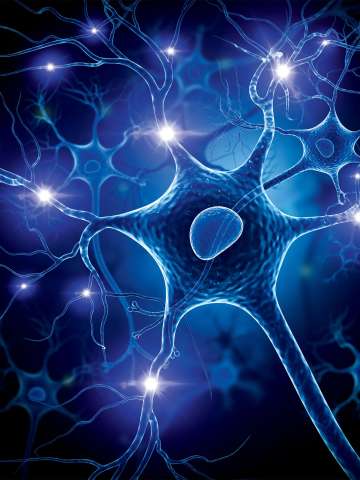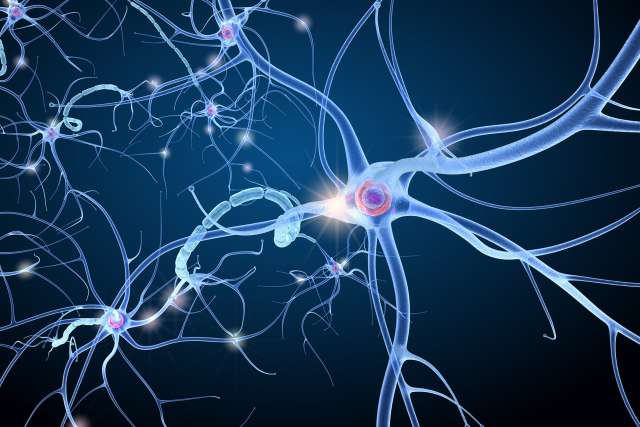Peripheral Nerve Disorders
The Peripheral Nerve Program at UCLA Health is one of the most comprehensive treatment programs of its kind in California. We work closely with multiple specialists to offer personalized care.

UCLA Health excellence in peripheral nerve disorders
The specialists in our Peripheral Nerve Program offer collaborative, state-of-the-art care. We are among the highest-volume centers in California for peripheral nerve repair and restoration. Our physicians actively research and treat all types of peripheral nerve disorders, injuries and tumors.
Highlights of our program include:
Multispecialty treatment: Our experts work closely with multiple specialists, including plastic surgeons, thoracic surgeons, head and neck surgeons and vascular surgeons. We are the only facility in California that treats peripheral nerve disorders with a team-based approach.
Full-spectrum, coordinated care: Patients have access to all procedures we offer in one setting, streamlining their care. We can easily make referrals as needed with easy access to a wide range of subspecialists throughout UCLA Health.
Physician expertise: Our specialists have advanced fellowship training in peripheral nerve disorders, allowing us to offer the most comprehensive care possible for these conditions. As an academic center, UCLA Health offers a high level of care and expertise.
State-of-the-art technology: We use the latest leading-edge equipment to diagnose and treat peripheral nerve disorders. Our operating rooms feature the most modern technology, including image guidance, robotics and computer assistance.
Research emphasis: We are actively involved in leading-edge research on peripheral nerve disorders, injuries and treatments. Our research includes collaboration with world-class UCLA Health bioengineers on new and innovative treatment options, such as artificial nerves and advanced nerve stimulation technology.
Peripheral nerve disorders we treat
Peripheral nerves are the nerves outside the spinal cord and brain. They carry messages between the brain and the rest of the body. An injury or disorder may interrupt these nerve signals, causing a range of symptoms that may alter sensation, produce pain or cause weakness.
We offer full-spectrum care for a range of conditions affecting the peripheral nerves, including:
Brachial plexus injuries: Damage to the nerves that start at the neck and run through the arm and hand that can result in paralysis
Carotid body tumors: A growth that develops on the side of the neck where the large blood vessel that carries blood to the brain (carotid artery) splits into smaller blood vessel branches
Carpal tunnel syndrome: Compression of the median nerve, which runs from the forearm to the palm of the hand
Facial pain: Any type of pain that affects the face and mouth region, possibly arising from conditions that affect the trigeminal nerve
Neurofibromas: Tumors that grow on nerves, leading to soft bumps on or beneath skin
Occipital neuralgia: Pain in the nerves that run from the base of the neck through the scalp, often causing sharp or burning pain at the back of the head
Peripheral neuropathy: Nerve damage that causes numbness or weakness in the hands or feet
Peroneal nerve compression: Irritation or pinching in the peroneal nerve, the branch of the sciatic nerve that controls the muscles that help the toes and ankle lift
Schwannomas: Tumors that start in Schwann cells, the cells that support and protect nerve cells
Thoracic outlet syndrome: A group of disorders characterized by compression or irritation of the blood vessels or nerves of the thoracic outlet, the space between the first rib and collarbone
Traumatic nerve injuries: Any damage to nerves arising from trauma, such as a car accident, fall or sports injury
Trigeminal neuralgia: A chronic pain condition that affects the trigeminal nerve in your head, causing sharp, electric-like pain along the lower portion of the face and jaw
Ulnar nerve compression: Irritation or pinching in the ulnar nerve, one of the three main nerves in the arm
Tests and procedures we offer
Our peripheral nerve specialists perform comprehensive assessments to accurately diagnose peripheral nerve injuries and disorders. We offer a wide range of advanced, effective treatment options.
Peripheral nerve disorder diagnosis
We use a variety of diagnostic tests, including:
Electromyogram (EMG): This test measures the electrical activity in muscles and nerves. The provider places a needle through the skin and into certain muscles, then asks the patient to contract these muscles. The electrical activity is displayed graphically on a device called an oscilloscope.
MR neurogram: Similar to a traditional MRI, this test uses magnets and radio waves to view nerves. We use state-of-the-art MRI scanners to accurately visualize the peripheral nerves. Patients lie in the MRI machine, which looks like a cylinder open at both ends, as the machine takes images.
Nerve conduction study: This test measures the speed at which electrical signals move through nerves. The provider attaches metallic pads to the patient’s skin, then stimulates nerves with mild electrical impulses. The electrodes detect the impulses, allowing providers to calculate how fast the impulse moves between nerves.
Positron emission tomography (PET) scan: This test evaluates the function of different tissues and organs. It uses an injection of a special dye with a radioactive tracer. The tracer collects in areas of the body with high chemical activity, showing up brightly on the PET scan.
Tractography and diffusion MRI: Tractography uses data from special diffusion MRIs to create 3D images of nerve tracts. Diffusion MRI measures how water molecules move in tissue. When we look at how water molecules move along the brain’s white matter or wiring, it can give us information about brain injuries and damage.
Peripheral nerve treatments
We offer a wide range of advanced procedures, including:
Deep brain stimulation (DBS): Our highly trained neurosurgeon can implant electrodes within the brain. These electrodes attach to a battery pack (generator) placed in the chest that sends small electrical impulses to targeted brain areas. DBS may treat face or body pain that does not respond to other less invasive techniques.
Dorsal root entry zone (DREZ) lesioning: The neurosurgeon performs a delicate operation to burn small areas of the spinal cord (dorsal root entry zone) to silence abnormal pain signals. DREZ lesioning relieves pain in up to 70% of patients with peripheral nerve injuries, particularly specific types of injuries often seen after accidents.
Nerve decompression: The neurosurgeon makes a small incision near the affected nerve and carefully moves away any blood vessels, scar tissue or tumors compressing the affected nerve. We may use this to treat occipital neuralgia, piriformis syndrome, peroneal nerve compression, carpal tunnel syndrome or ulnar nerve compression.
Nerve repair: In severe injuries, nerves may be damaged to the point that they don’t heal on their own. A neurosurgeon may perform surgery to remove the damaged portion of a nerve and reconnect the functioning nerve ends. This may be a treatment for brachial plexus or traumatic nerve injuries.
Nerve transplant: A surgeon removes the damaged portion of a nerve, then replaces it with a piece of nerve (graft) from another area of the body. This procedure may treat severe traumatic or brachial plexus nerve injuries.
Neurolysis: Scar tissue may form after an injury or surgery and compress a nerve. During neurolysis, the surgeon carefully removes scar tissue from the affected nerve to free it up. The procedure is similar to nerve decompression.
Peripheral nerve stimulation: A surgeon places a small wire (electrode) near specific peripheral nerves under the skin. The electrodes connect to a generator, which sends electrical impulses to the nerves to disrupt pain signals. This treatment may be an option for nerve injuries, trigeminal neuralgia, occipital neuralgia or peripheral neuropathy.
Radiofrequency ablation: A neurosurgeon places a needle through the skin using X-ray guidance to position it on a peripheral nerve. This technique uses radiofrequency heat to reduce the nerve’s ability to send pain signals to the brain. This option effectively treats trigeminal neuralgia in 70% to 80% of patients.
Spinal cord stimulation: The neurosurgeon implants one or more wire leads with electrodes near the spinal cord. The leads are connected to a generator inserted underneath the skin around the waistline. The generator then acts as a pacemaker to send electrical impulses to the spine. Patients can control the generator with a remote so that it only sends out impulses to disrupt pain signals as needed. This surgical option can treat chronic pain or peripheral neuropathy.
Vagus nerve stimulation: A vagus nerve stimulator (VNS) is a small wire that wraps around a specific peripheral nerve in the neck called the vagus nerve. It connects to a pulse generator placed under the skin in the upper chest. The wire sends small electrical impulses to the vagus nerve consistently or as needed. VNS is useful in treating certain forms of epilepsy and depression, and for enhancing post-stroke rehabilitation.
Our expert team
Our physicians are experts in detecting, diagnosing and treating peripheral nerve disorders. We have advanced specialty training that allows us to offer the full range of available procedures for these conditions. Patients benefit from a multispecialty, coordinated care approach.
Neurosurgical Faculty
Colleagues in Other Departments
Michael C. Graves, MD
Contact us
Call to request an appointment with a peripheral nerve specialist at UCLA Health.
Find your care
We actively diagnose and treat a wide variety of peripheral nerve disorders, using the most advanced techniques. Call to learn more about our services.




